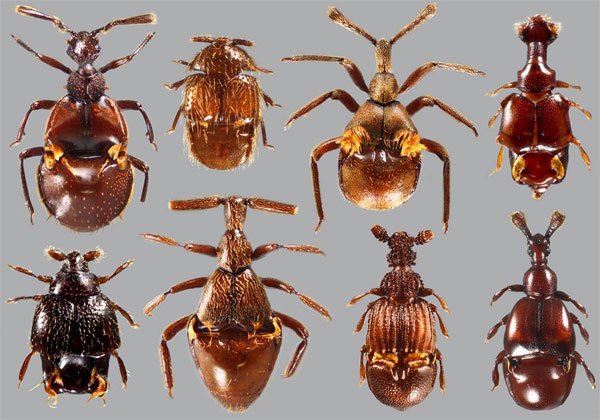Discover 52 million year old fossils of strange creatures
Scientists have discovered fossils dating from Thuy Tan (about 56 million years ago to 34 million years ago) of a parasitic insect. It is estimated that this is a very valuable fossil for deciphering ancient mysteries.
It is known that newly discovered 52 million-year-old fossils are fossils of a 'favorite' beetle . It is considered to be the oldest evidence of the emergence of this parasitic insect , a study said.
Like their current relatives, ancient beetles can be a prejudice, depending on ants to survive. This species may have coexisted with ants and benefit from them by eating ants' eggs or taking advantage of ant resources.
According to the researchers, this behavior of beetles and butterflies is an ancient evolutionary phenomenon. However, because the quality of fossil samples is not good, dating and the process of forming this behavior face many obstacles.

There are about 370 species of beetles belonging to the Clavigeritae group - the ants are from 1 to 3mm in length. Researcher, expert beetle Joseph Parker, of the American Museum of Natural History, and a postdoctoral fellow at Columbia University, said there are still many unpopular insect species that have not been discovered. .
'The findings do not tell us more about beetles, but also tell a lot about ants. Their nest must be large enough and many resources to make the beetles concentrate to evolve to nest , " Parker said. " And when ants explode ecologically and start to dominate, then this bug is destroyed ".
Ancient beetles use highly sophisticated strategies to bypass ants in the nest. Ants mainly rely on hormones to recognize intruders, and in some mysterious way, Clavigeritae beetles have overcome this odor-sensing system and participate in ants' lives.
"Adapting to living in a society is very beneficial , " Parker said. "These bugs live in a climate that is controlled inside the nest, away from the enemy and accessible. with lots of food, including ant eggs, the most significant is the amount of liquid food released directly by the ants into their mouths.

Not only that, the bugs also have to change their shape to integrate into the ant colonies. Clavigeritae does not look like its relatives at all. Their abdomen and antenna segments are integrated, protecting them from tricked ants who have to take them around the nest. Finally, worker ants take the beetle to the larval rearing area where the beetle takes their eggs and ants.
Meeting the Clavigeritae species in nature is a rare occurrence. Therefore, the newly discovered fossil (called Protoclaviger trichodens ), is a very valuable discovery. This may be the first fossil discovered by this group of organisms.
This is an amber fossil collected from the area once a rich tropical forest in India.

Researching fossils, scientists discovered this ancient parasitic insect was like a modern Clavigeritae beetle, but the two hooked antennae on their abdomen showed the ancientness of this species. In addition, Protoclaviger's abdominal burns are still separate, not as fused as today's beetles.
'Protoclaviger is a remarkable fossil ,' Parker said. 'It marks a big step along the path of evolution to today's social parasites, helping us learn about the chain of events. leads to this sophisticated form ".
The title has been changed.
- Marvel at the remains of strange creatures with human legs and gibbon arms
- Discover strange creatures in cocoons 200 million years old
- Detection of fossil organisms 500 million years old
- 185 million year fossils of ancient organisms have 38 children
- 70 million year fossils in mail from the United States
- Detecting fossil creatures with 700 million year old spines
- 100 million-year insect fossils resemble alien creatures
- Discover the oldest animal in Earth
- Discover intact marine life in amber 99 million years
- Discover fossils of exotic shrimp with apricot and 50 legs
- Detecting tiny crocodiles in the rock, suspecting strange creatures
- Discover strange sea creatures on the English coast
 Discovered an ancient centipede fossil 99 million years old
Discovered an ancient centipede fossil 99 million years old Discovered bat-like dinosaurs in China
Discovered bat-like dinosaurs in China Discovered a 200-year-old bronze cannon of the coast
Discovered a 200-year-old bronze cannon of the coast Discover 305 million-year-old spider fossils
Discover 305 million-year-old spider fossils Which insect is the smartest?
Which insect is the smartest?  Scientists discover how desert ants navigate
Scientists discover how desert ants navigate  What if ants were the size of elephants?
What if ants were the size of elephants?  Why do many scientists believe that ants are the most perfectly evolved creatures on Earth?
Why do many scientists believe that ants are the most perfectly evolved creatures on Earth?  People study ants to write algorithms
People study ants to write algorithms  Scientists discover the first species of mouse that can grow crops
Scientists discover the first species of mouse that can grow crops 